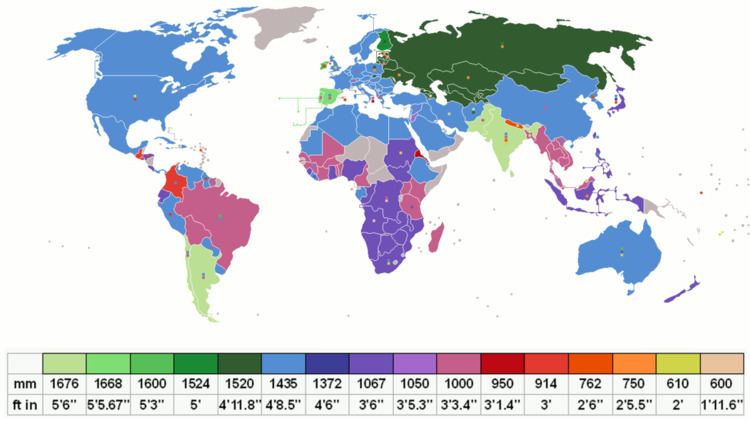 | ||
Two foot and 600 mm gauge railways are narrow gauge railways with track gauges of 2 ft (610 mm) and 600 mm (1 ft 11 5⁄8 in) respectively. Railways with similar, less common track gauges such as 1 ft 11 3⁄4 in (603 mm) and 1 ft 11 1⁄2 in (597 mm) are grouped with 2 ft and 600 mm gauge railways.
Contents
Overview
Many of these railways were industrial lines rather than common carriers, though there were exceptions such as the "Maine two footer" lines in New England (some are still operating), the Chicago Tunnel Company's 60-mile (97 km) network under the Chicago Loop, and the Chemins de Fer du Calvados in Normandy. There are also non-industrial railroads utilizing these gauges that are operating in the present day, such as the Festiniog Railway in Wales, the Cripple Creek and Victor Narrow Gauge Railroad in Colorado, and the Darjeeling Himalayan Railway in India; but then they rely on tourist traffic and most of them are revived or built by enthusiasts.
Trench railways of World War I produced the greatest concentration of 600 mm (1 ft 11 5⁄8 in) gauge railways observed to date. In preparation for World War II, The French Maginot Line and Alpine Line also used 600 mm (1 ft 11 5⁄8 in) gauge railways as supply routes to the fixed border defences.
Australia has over 4,000 kilometres (2,500 mi) of 2 ft (610 mm) gauge sugar cane railway networks in the coastal areas of Queensland, carrying more than 30 million tonnes of sugar cane a year.
Besides stand-alone heritage railways, there are many examples of tourist 2 ft (610 mm) gauge and 600 mm (1 ft 11 5⁄8 in) gauge railways found in amusement parks and theme parks of various sizes worldwide.
Exchange of rolling stock
The interchange of rolling stock between these similar track gauges occasionally occurred; for example, the South African Class NG15 2-8-2 locomotives started their career on the 600 mm (1 ft 11 5⁄8 in) gauge Otavi Mining and Railway Company in South-West Africa (now Namibia), were transferred to the 2 ft gauge railways in South Africa, and currently some surviving locomotives reside in Wales on the 1 ft 11 1⁄2 in (597 mm) gauge Welsh Highland Railway and the 1 ft 11 3⁄4 in (603 mm) gauge Brecon Mountain Railway.
